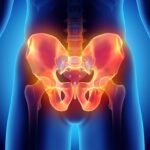
Angiology
In Spain, over 72% of women between the ages of 30 and 60 are concerned about circulatory problems in their legs. Their concerns are typically focused around the adverse effects of poor circulation on their overall health, the pain they may suffer as a result, and how their physical appearance may be affected.
At Hospital Ochoa we offer our patients the most advanced medical and surgical expertise for analysing and solving vascular pathologies.
Angiology is the medical speciality dedicated to the study, prevention and treatment of health issues affecting the circulatory and lymphatic systems, i.e. arteries, veins and lymphatic vessels. Together with the heart, these vessels are responsible for the distribution of nutrients throughout the body.
One of the most common problems affecting blood vessels is peripheral artery disease (PAD), which is the abnormal narrowing of arteries, typically in the legs, and forces patients to pause frequently when walking (intermittent claudication).
Surgical treatment
- Stripping. This technique is increasingly falling out of use due to its aggressive and painful nature. It consists of removing all or part of the saphenous vein, which is the largest vein in the body and extends from the ankle to the groin. It requires two or three days of hospitalisation and up to ten days of complete rest after the operation.
- Endovenous laser and radiofrequency ablation. A narrow tube called a catheter is inserted into the vein using an ultrasound scan. Then either a laser or radiofrequency probe is passed through the catheter, which heats up the vein until it is sealed closed. Blood flow will naturally be redirected through a healthy vein, and the damaged varicose vein will fade away.
- Sclerotherapy. A substance is injected into the vein, irritating and sealing it, and eventually the vein will fade away. The procedure may take a number of repeated sessions, but no anesthesia is necessary. The patient is required to wear compression stockings for at least a few weeks after the operation.
- CHIVA treatment. The ambulatory conservative hemodynamic correction of venous insufficiency (CHIVA) method aims to improve the hemodynamic disorder without destroying the veins. A Doppler ultrasound is used to map out the column of blood vessels, and these are divided into sections so that pressure is divided equally amongst them. Insufficient valves are tied off and blood is no longer able to flow backwards. It is performed under local anesthesia and on an outpatient basis.

































